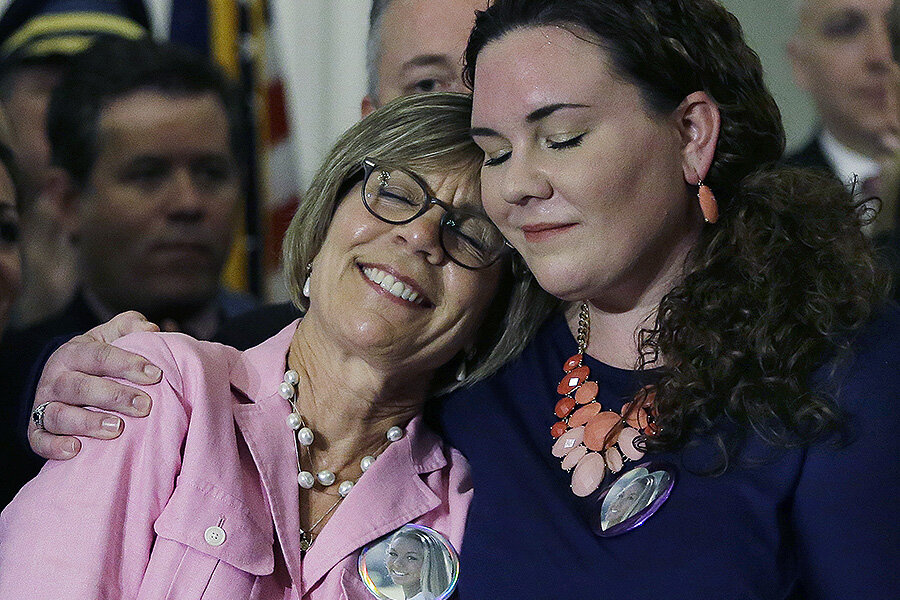CDC guidelines put doctors at the front of anti-opioid campaign
Loading...
The Centers for Disease Control and Prevention released new guidelines on Tuesday that place greater responsibility on doctors on curbing opioid abuse in America, an epidemic that killed 28,647 people in 2014.
"The prescription overdose epidemic is doctor-driven," Thomas Frieden, the director of the CDC, told reporters in a phone call.
Despite unusually bipartisan support, federal responses to the explosion overdoses of heroin and prescription painkillers has lagged behind individual states. Massachusetts, New Hampshire, New York, and Vermont, have passed legislation to improve treatment access and limit the length and frequency of prescriptions.
Shifting the focus from punishment to treatment and prevention, and holding medical providers accountable for responsible prescriptions, may have helped turn a page. In January, the White House unveiled 2017 budget recommendations including $1.1 billion to combat opioid addiction at the state and federal level, much of it going to treatment and overdose-reversal drugs.
"This is an area where I can get agreement from Bernie Sanders and Mitch McConnell," President Obama told governors at a February meeting. "That doesn’t happen that often, but this is one. And it indicates the severity of the issue."
The Centers for Disease Control and Prevention's (CDC) new voluntary guidelines are aimed at doctors prescribing painkillers for treatable conditions, with exceptions for post-surgery, cancer, or hospice patients, and emphasize carefully screening to determine whether opioid painkillers are actually the best solution. The guidelines recommend trying other treatments, or starting with low doses of painkillers, as well as regularly following-up to see if the dosage can be decreased. They also call for prescribing only a few days' worth of medication at a time.
Prescriptions for opioids, like OxyContin, Percocet, and Vicodin, have quadrupled since 1999, according to a CDC report. Since then, the number of drug overdose deaths have also soared, and opioids, including heroin, make up a large percentage. In 2014, they were linked to 61 percent of all overdose deaths.
"In 2012, health care providers wrote 259 million prescriptions for opioid pain medication, enough for every adult in the United States to have a bottle of pills," according to the CDC.
But opioid prescriptions can be habit-forming to an extent that doctors say they were not aware of when the drugs began to be more regularly recommended. Purdue Pharma, which makes OxyContin, paid a $34.5 million fine in 2007 after pleading guilty to misleading customers about its likelihood of leading to addiction. The company has made $35 billion since releasing the drug in 1995.
Years later, some medical experts say they're not convinced that the painkillers are all that helpful. Meanwhile, evidence of their dangers has mounted.
"It has become increasingly clear that opioids carry substantial risks and uncertain benefits, especially as compared with other treatments for chronic pain," Dr. Frieden wrote in the New England Journal of Medicine, noting that up to 26 percent of opioid-receiving patients (omitting those with cancer) develop dependency, and one in 550 die from opioid-related causes.
Some patients eventually turn to heroin, which is derived from opioids, particularly if they have difficulty securing more painkiller prescriptions.
"Most of the heroin addicts we treat started by using prescription opiates," Brian McAlister, the CEO of the Full Recovery Wellness Center in Fairfield, N.J., told The Christian Science Monitor in February.
Some were prescribed by a doctor or dentist, others were stolen from family or friends' medicine cabinets, and others were purchased illegally just to party – but the party ends very quickly. These drugs are highly addictive, and when the supply runs out, the problems get worse.
On Monday, Massachusetts Gov. Charlie Baker signed unanimously-approved legislation to limit the amount of painkillers doctors can prescribe at a time. At the end of March, New York state will digitize all prescriptions in an effort to cut down on patients trading, selling or modifying written ones. An online registry will help ensure that doctors know which other prescriptions their patient has received.
But the CDC's voluntary guidelines may help push other states, or national lawmakers, in a similar direction, although it does not have the power to regulate prescriptions.
"These will become the definition of the standard of care," Myra Christopher, the director of the Pain Action Alliance to Implement a National Strategy, predicted in a conversation with The New York Times.








